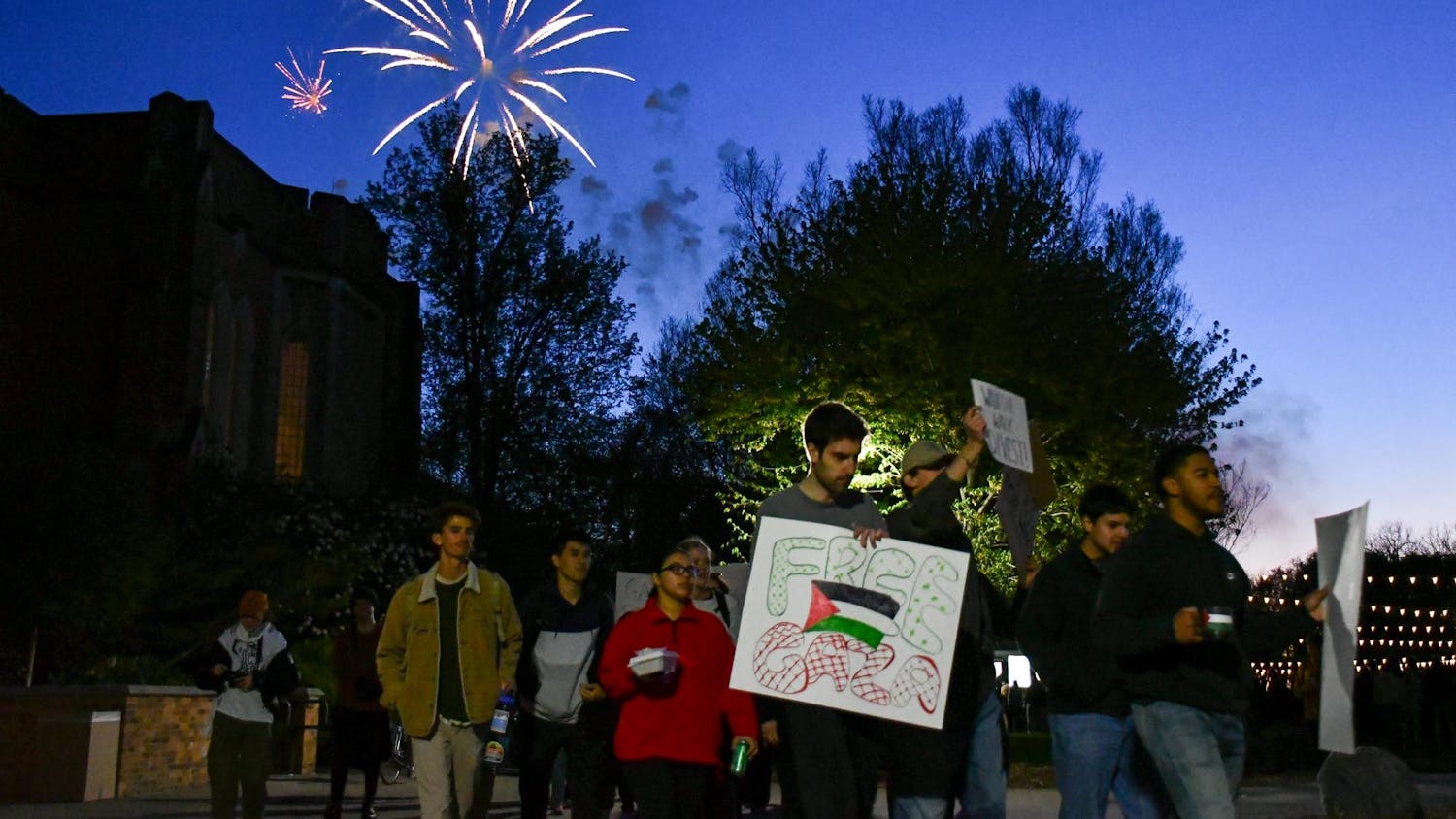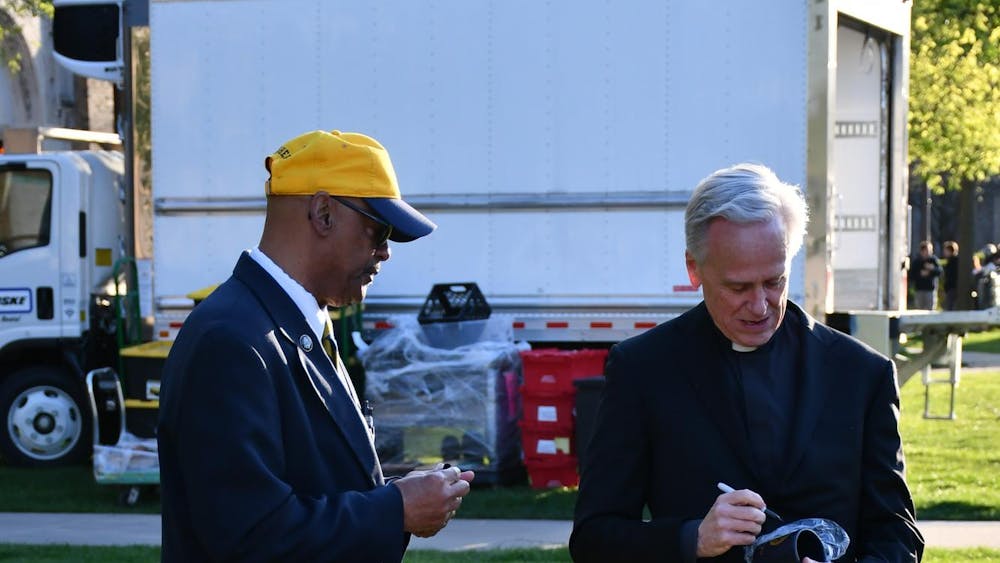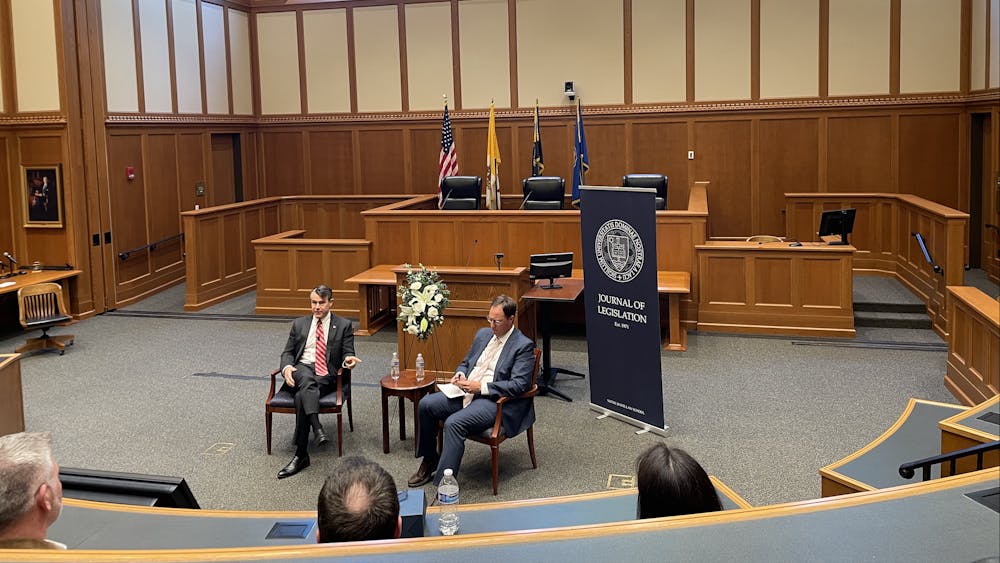When University President Fr. John Jenkins announced the campus-wide Advancing Our Vision initiative in February 2011, he challenged the Strategic Funding Committee (SFC) to identify internal changes that could generate about $20 to $40 million in savings for the University's budget.
At the time, Jenkins asked the Notre Dame community to assess its financial needs as "a way to look inward to identify resources to advance Notre Dame's aspirations," according to the initiative's purpose.

Twenty months later, after the committee analyzed more than 100 potential opportunities for increasing revenue and savings, that goal is taking shape on campus without any job or pay cuts.
Linda Kroll, associate vice president for the Office of Budget and Planning, said the goal of Advancing Our Vision was to determine the "best and most appropriate" uses for funds already included in the University's $1 billion annual budget.
"We asked ourselves, 'What are creative ways and ideas we can come up with to look at resources that are already here?" Kroll said. "Then we can use those resources to do things that we'd like to do long-term for the University, whether it's enhancing financial aid for students, developing new programs or building facilities for emerging needs."
Between February and August 2011, the committee, which included Executive Vice President John Affleck-Graves and Provost Tom Burish, identified the internal changes that would meet Jenkins' challenge to repurpose what amounted to two to four percent of the budget.
"[Advancing Our Vision] is really a program of asking people to do things differently and conserve resources where they had the ability to do that," Kroll said. "As an institution, we're looking to recapture resources that were saved so we can move the University forward."
Kroll said Jenkins and the SFC appealed to Notre Dame departments, employees and the SFC working group for potential savings ideas. The working group, headed by Affleck-Graves, then examined each idea and analyzed its feasibility and potential for a favorable return based on the investments of time, money and energy required to implement a given change.

"Several subcommittees were formed with subject matter experts who could go deeper into the analysis of a specific type of change," Kroll said. "That analysis would go back up to the working group before moving onto the oversight committee, who then voted on the ideas that seemed the most appropriate and would have the highest return potential for getting to the [$20 to $40 million] goal."
Jenkins reviewed the final recommendations for the initiative last fall, and he announced in September 2011 that the committee had identified at least $30 million in recurring funds that could be redirected inside the budget.
Kroll said many of the recommended changes have already been implemented. The programs to economize the budget range from the installation of a voice-over IP phone system and motion-activated sensors on light switches to the promotion of web-based conferencing services and the improvement of printer efficiency.
Areas of particular focus were travel, procurement, food and beverage, printing, technology, the University's libraries, employee benefits and waste reduction, as well as process improvement and organizational structure review, Kroll said.
"The Office of Continuous Process Improvement has been working with departments to break down their work processes and rebuild them to get rid of any inefficiencies or redundant steps," she said. "The Office of Human Resources is also partnering with leaders of various departments to look at organizational structures of employee positions to make sure our people resources are aligned to be prepared to leverage services for the future."
Kroll said Human Resources considered the responsibilities of employees in any given position.
"They make sure the employee's work is logical and puts them on a trajectory of career progression," she said. "We need to make sure people feel valued, that they are doing valuable work and that they're directly contributing to the University's mission."
Advancing Our Vision's initiatives also helped improve employee services without making any pay or employment cuts in the process, Tammy Freeman, director of talent management and human resources strategy, said. In addition, there was no decline in hiring this year.
"At other universities, including Harvard and Stanford, things are much more severe," Freeman said. "People did lose jobs. Even among private universities, I think we're pretty unique in the approach we've tried to take.
"In looking at how we use our resources, we haven't cut any of our training budget for staff. We're continuing those programs and continuing to develop people, so our priorities have stayed intact."
Senior human resources consultant Mark Kocovski said his department viewed Advancing Our Vision as a means of improving the University for both employees and students.
"The leadership of the University charges us with being good stewards of all the financials, the tuition dollars," Kocovski said. "We need to make sure that we do that and commit them to the people."
One initiative that achieved this goal was the recent construction of the Notre Dame Wellness Center, which provides primary care, laboratory services and a pharmacy to all employees and graduate student families, Freeman said. Human Resources also developed a retirement incentive window as part of Advancing Our Vision.
"The Wellness Center was designed to save health care costs but at the same time provide better services to employees," Freeman said. "[The retirement incentive window] was actually somewhat positive because people who were thinking about retiring got kind of a bonus to go ahead and make the decision to retire."
Kroll said one of the only areas in which benefits were reduced for employees was in purchasing football season tickets: Employees no longer receive the 20 percent discount as they did before.
"Football is in high demand and people want access to it," Kroll said. "Employees will still receive a discount in that the season ticket rights fee non-employees pay to buy tickets is waived for employees."
As more programs are implemented as part of Advancing Our Vision, Kroll said the University will now monitor the success and outcomes of new programs, and determine whether they matched projections and estimates and track expectations in the future.
But as universities across the country assess their economic and financial situations, Kocovski said the unified effort by the Notre Dame community to search for internal solutions is unprecedented.
"I probably haven't seen greater collaboration between departments across campus," he said. "Everyone is trying to see how to make those dollars stretch, so that collaboration has gone a long way."
Freeman said the University's commitment to its vision and mission as a top-tier research university with a Catholic character has also made the initiative a success.
That approach is driven by the unmatched spirit of Notre Dame and the unity of everyone on campus behind a common vision of the University, Kroll said.
"Notre Dame is a special place, so you can get people really motivated to do what's best for the institution," she said. "They're willing to put their personal departments and interests aside to make Notre Dame the best it can be. That spirit was very much a part of this program, even if we were asking people to change the way they do things."












